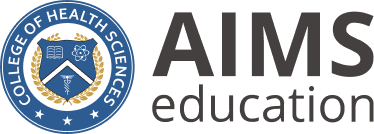DIAGNOSTIC CARDIAC SONOGRAPHY
Length
16 Months
ScheduleThe schedule for this program is based on a 15-week semester. The daily schedule and weekly hours will vary each semester based on the required lecture, lab, and clinical hours.
Daily schedule varies
Financial AidFederal student aid is available for those who qualify. Students must submit a Free Application for Federal Student Aid (FAFSA) to determine their eligibility. Please contact our financial aid department to learn more.
YES
Application DueApplications are reviewed on a rolling basis, so we strongly recommend submitting your application as early as possible. Early acceptance may be granted to exceptional applicants. All other decisions will be made after the application deadline. If a program reaches capacity before the deadline, applications may close early.
February 27, 2026
Length
16 Months
ScheduleThe schedule for this program is based on a 15-week semester. The daily schedule and weekly hours will vary each semester based on the required lecture, lab, and clinical hours.
Daily schedule varies
Financial AidFederal student aid is available for those who qualify. Students must submit a Free Application for Federal Student Aid (FAFSA) to determine their eligibility. Please contact our financial aid department to learn more.
YES
Application DueApplications are reviewed on a rolling basis, so we strongly recommend submitting your application as early as possible. Early acceptance may be granted to exceptional applicants. All other decisions will be made after the application deadline. If a program reaches capacity before the deadline, applications may close early.
February 27, 2026
Technical Standards
Prospective DCS students must possess sufficient strength, motor coordination and manual dexterity to:
- Stand and walk for 85% of work time.
- Reach at or above shoulder level intermittently for 90% of work time.
- Maintain prolonged arm positions necessary for scanning.
- Lift up to 45 lbs. unassisted.
- Transport, move, and/or lift patients from a wheelchair or stretcher to ultrasound table or patient bed, and physically assist patients into proper positions for examination.
- Move, adjust and manipulate a variety of ultrasound equipment weighing up to 500 lbs. (on wheels) to other areas of a facility in order to perform studies according to established standards.
- Record complete physiologic ultrasound exams consisting of 2D, M-mode, pulsed and continuous wave Doppler, and color flow imaging, and make appropriate quantitative calculations from the data recorded.
Prospective DCS students must:
- Possess sufficient strength, finger dexterity and flexion to perform finite motor skills.
- Possess sufficient eye/hand coordination skills related to performance of sonographic examinations.
- Be able to use senses (vision, hearing, smell and touch) to recognize changes in a patient’s condition and needs.
- Be able to hear, understand and react quickly to verbal instructions and patient needs, including but not exclusive to hearing codes, alarms and patient calls.
- Be able to work in a semi-darkened room for prolonged periods of time.
- Practice ultrasound safety.
- Be able to determine if contrast injection is indicated and act accordingly.
- Be able to assist in the performance of transesophageal echocardiograms and stress echocardiograms.
- Be able to exercise sufficient judgment to recognize and correct performance deviations.
- Be able to recognize any condition, whether observed in the echocardiogram or in patient behavior, which may pose immediate threat to health or life, and react appropriately.
- Possess these intellectual skills: comprehension, measurement, mathematical calculation, problem solving, reasoning, integration, analysis, comparison, self-expression, and criticism.
- Possess visual acuity for watching patients' vital signs and for accurate image acquisition for all echocardiographic examinations.
Health Standards
Prospective DCS students must be able to consistently demonstrate emotional, mental and physical health in order to:
- Meet the demands of the position including handling stressful situations related to technical and procedural standards and patient care situations.
- Provide physical and emotional support to the patient during sonographic procedures and be able to respond to situations requiring basic first aid, patient care, and emergency care of the patient in the absence of, or until the physician arrives.
- Follow directions effectively and work closely with members of the health care community.
- Carry out all assigned duties.
- Be able to communicate both verbally and non-verbally in an effective manner with staff, patients and physicians, in order to explain procedures, give instructions and obtain information.
- Perform sonographic examinations and procedures according to established standards.
- Be able to view recorded images for the purpose of identifying proper protocol, procedural sequencing, technical qualities and identification of pathophysiology.
- Be competent in patient care and management.
- Be able to discriminate between blacks, grays, and whites, and various color combinations that indicate blood flow on both display devices and recorded images (film and paper).




















